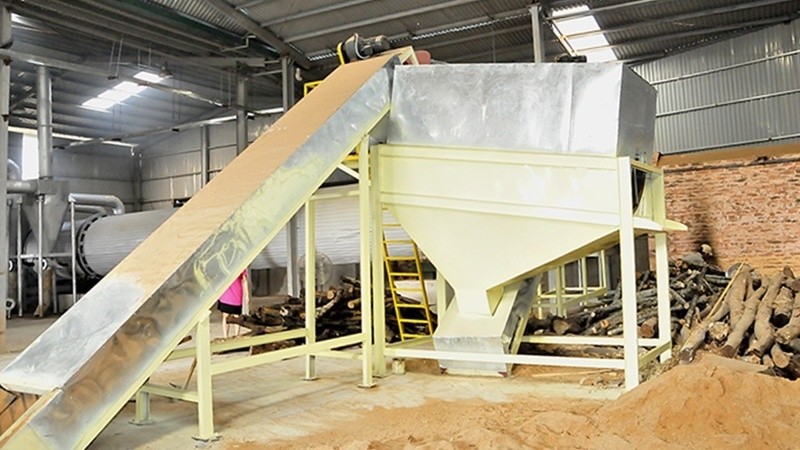The formation and development of the wood pellet industry in Vietnam is attributed to the abundant source of materials, generated from by-products of the wood processing industry. Input sources for making wood pellets include sawdust, shavings, twigs and the tops of small diameter plantation timber.
In addition, the production of wood pellets does not require large investment or complicated management technology, creating opportunities for many enterprises to participate in the production stage.
Vietnam’s source of raw materials for wood pellet production are also located near seaports which is convenient for transport and exportation. These are the advantages for the wood pellet industry’s expansion in the past and its growth for the future.
According to experts of the Vietnam Timber and Forest Products Association (VIFOREST), ROK and Japan are the two largest importing markets of Vietnamese wood pellets. The ROK market has a larger scale than the Japanese market. However, the level of stability in the Japanese market is much higher. The average export price to the Japanese market is currently about US$20-30 per tonnes, higher than that of the ROK market.
According to the Vietnam Administration of Forestry, Vietnam currently has about 80 factories producing wood pellets. However, the investigation of information for Forest Trends shows that the number of enterprises directly involved in the production and export of wood pellets can mount to hundreds of enterprises.
The Southeast region, which is the hub of the wood processing facilities, is home to the largest number of wood pellet facilities in the country, thanks to the abundant supply of by-products from wood factories.
The industry still has room for expansion thanks to the increasing demand for wood pellets to Japan in the future. According to exporters for the Japanese market, the volume of wood pellets are expected to expand by three times in 2024 and 2025.
If Vietnam's production capacity is kept at the current level, the supply and demand for these items will balance within the next 2-3 years. The Vietnamese wood pellet industry also has the potential to increase the proportion of Forest Stewardship Council (FSC) certified products, which can be achieved through the cooperation between wood producers and forest growers to generate certified wood sources.
Despite the rapid growth speed, the wood pellet production and export industry currently reveals a number of limitations. The input of raw materials has yet to be strictly controlled in terms of quality and legal aspects. Some processing facilities use mixed materials, affecting the production quality. The supply of input materials with sustainable forest management certificates (FSC) is still modest while demand for certified products continues to increase.
Therefore, the strict control over the quality of input materials and access to modern technology to create high quality products with reasonable prices are of the utmost importance for enterprises producing wood pellets for export.
















